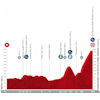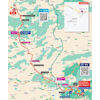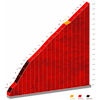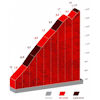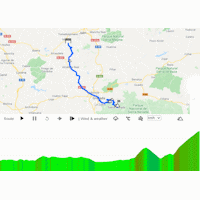The first 90 kilometres are the calm before the storm. The peloton rides in southeasterly direction towards the Sierra Nevada. Mostly rolling terrain, although Puerto de Castillo near Locubín stand out a little. The climb is 6.8 kilometres long and averages 4.5%. Which is really nothing compared to the hardship ahead.
The riders enter the mountain range with the highest summit – Mulhacén, at 3478.6 metres – of the Iberian peninsula shortly after moving through Granada. The first climb begins in Monachil. It’s the Alto del Purche, a 9.1 kilometres test with an average gradient of 7.6%, while the first 3 kilometres are especially hard. Also, the last 200 metres go up at 11%.
After the Purche climb the riders could turn right to head straight for Sierra Nevada, but they don’t. A downhill takes them to Pinos Genil to re-start the ascent on the opposite side of a Bianchi-green reservoir.
The gradients are doable at first, but this changes after Güéjar Sierra. The riders enter the Alto de Hazallanas, which is a 7.3 kilometres climb with an average gradient of 9.8%. The route does not descend at the top but continues to ascend into Sierra Nevada, a ski resort at 2,510 metres above sea level. That last part – also called Alto Hoya de la Mora – rises 817 metres in the course of 12 kilometres, thus averaging 6.8%. From Güéjar Sierra all the way to the the line is a 19.3 kilometres toil at 7.9%.
In 2017, La Vuelta did turn right after the Alto del Purche and climbed the ‘motorway’ to Sierra Nevada. Miguel Ángel López took the spoils that day.
Ride the route yourself? Download GPX stage 15 Vuelta.
Another interesting read: results 15th stage 2022 Vuelta.
Vuelta a España 2022 stage 15: route, profile, more
Click on the images to zoom
